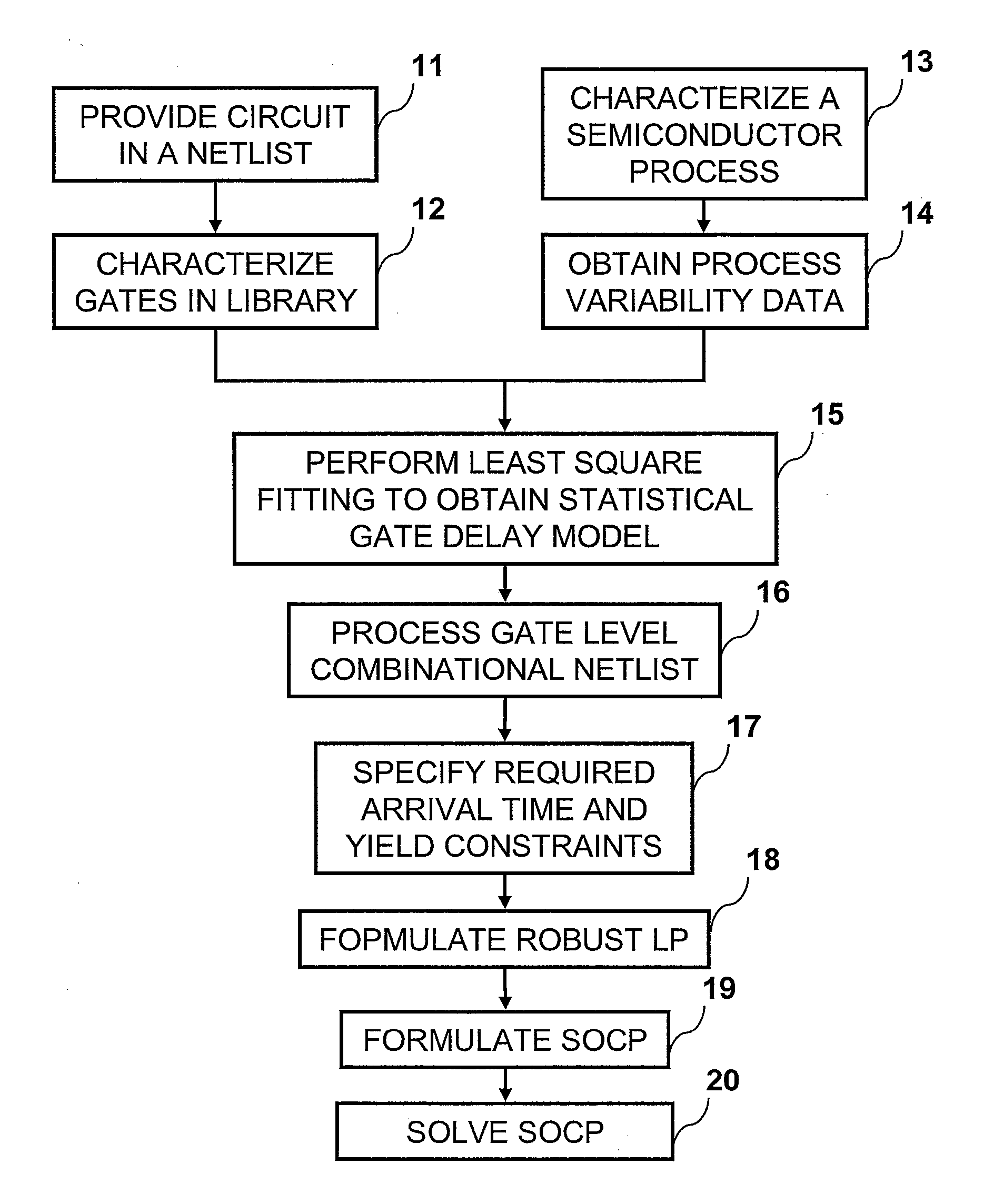Method for Performing Post-Synthesis Circuit Optimization
a post-synthesis circuit and optimization technology, applied in the field of circuit optimization, can solve the problems of large yield loss in the high-performance bin, low-power devices are vulnerable to process variability, and high-power devices are also vulnerable to process variability
- Summary
- Abstract
- Description
- Claims
- Application Information
AI Technical Summary
Benefits of technology
Problems solved by technology
Method used
Image
Examples
Embodiment Construction
[0014] Referring now to the drawings and in particular to FIG. 1, there is illustrated a high-level logic flow diagram of a method for performing post-synthesis circuit optimization, in accordance with a preferred embodiment of the present invention. Initially, a circuit ready to be optimized is represented in a gate-level description (i.e., a netlist), as shown in block 11. The logic gates within the circuit come from a gate cell library that may include a variety of simple gates, such as NAND2, NAND3, NAND4, NOR2, NOR3, INVERTER, and other complex modules. The size of each gate within the gate cell library determines the speed with which a gate produces a correct output. The gates in the gate 11 cell library are then electrically characterized (or simulated) using a circuit simulator, as depicted in block 12. A circuit simulator, such as HSPICE, can be utilized to characterize the dependence of a gate's delay on the gate's size and the load “seen” by the gate at the gate's output....
PUM
 Login to View More
Login to View More Abstract
Description
Claims
Application Information
 Login to View More
Login to View More - R&D
- Intellectual Property
- Life Sciences
- Materials
- Tech Scout
- Unparalleled Data Quality
- Higher Quality Content
- 60% Fewer Hallucinations
Browse by: Latest US Patents, China's latest patents, Technical Efficacy Thesaurus, Application Domain, Technology Topic, Popular Technical Reports.
© 2025 PatSnap. All rights reserved.Legal|Privacy policy|Modern Slavery Act Transparency Statement|Sitemap|About US| Contact US: help@patsnap.com



